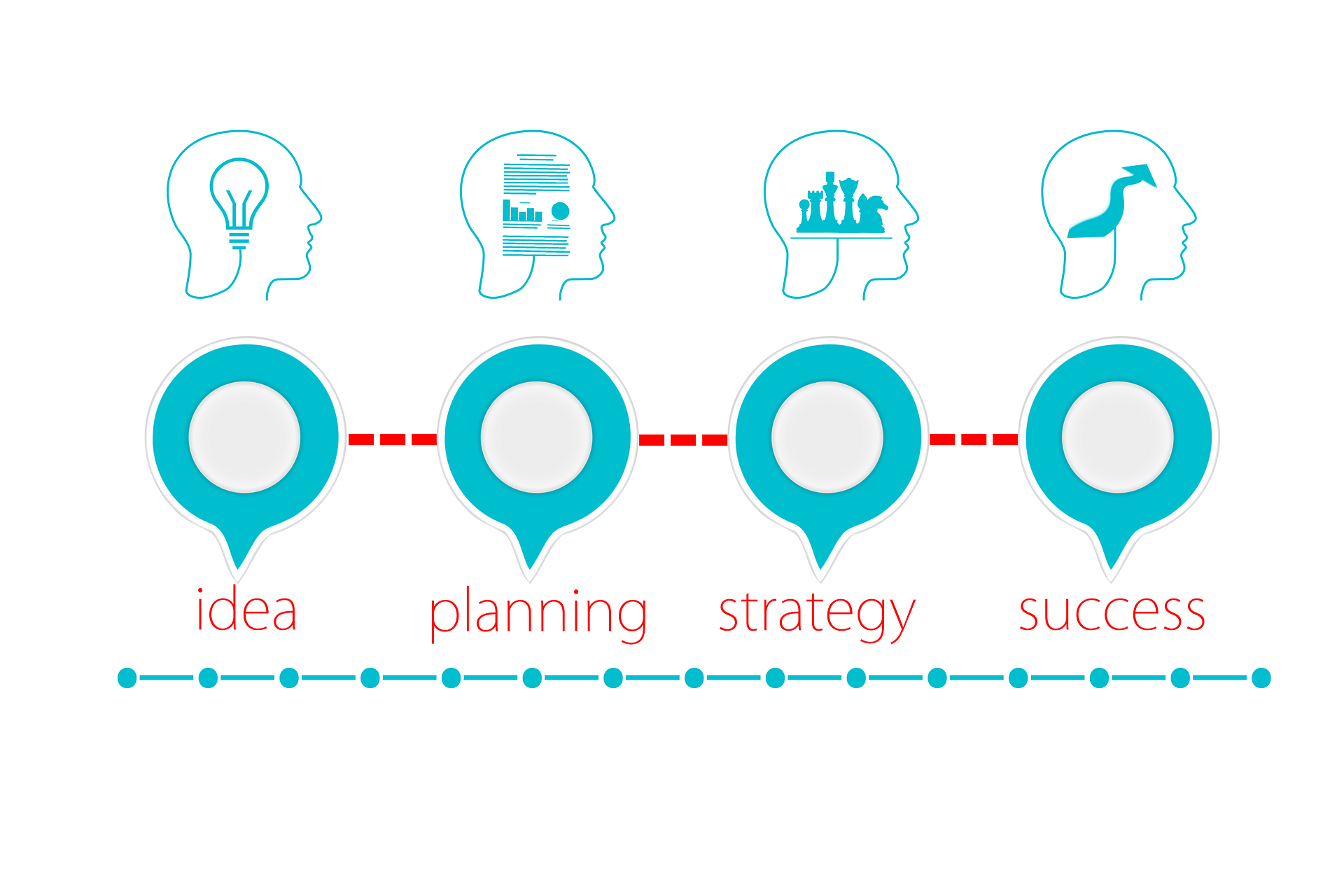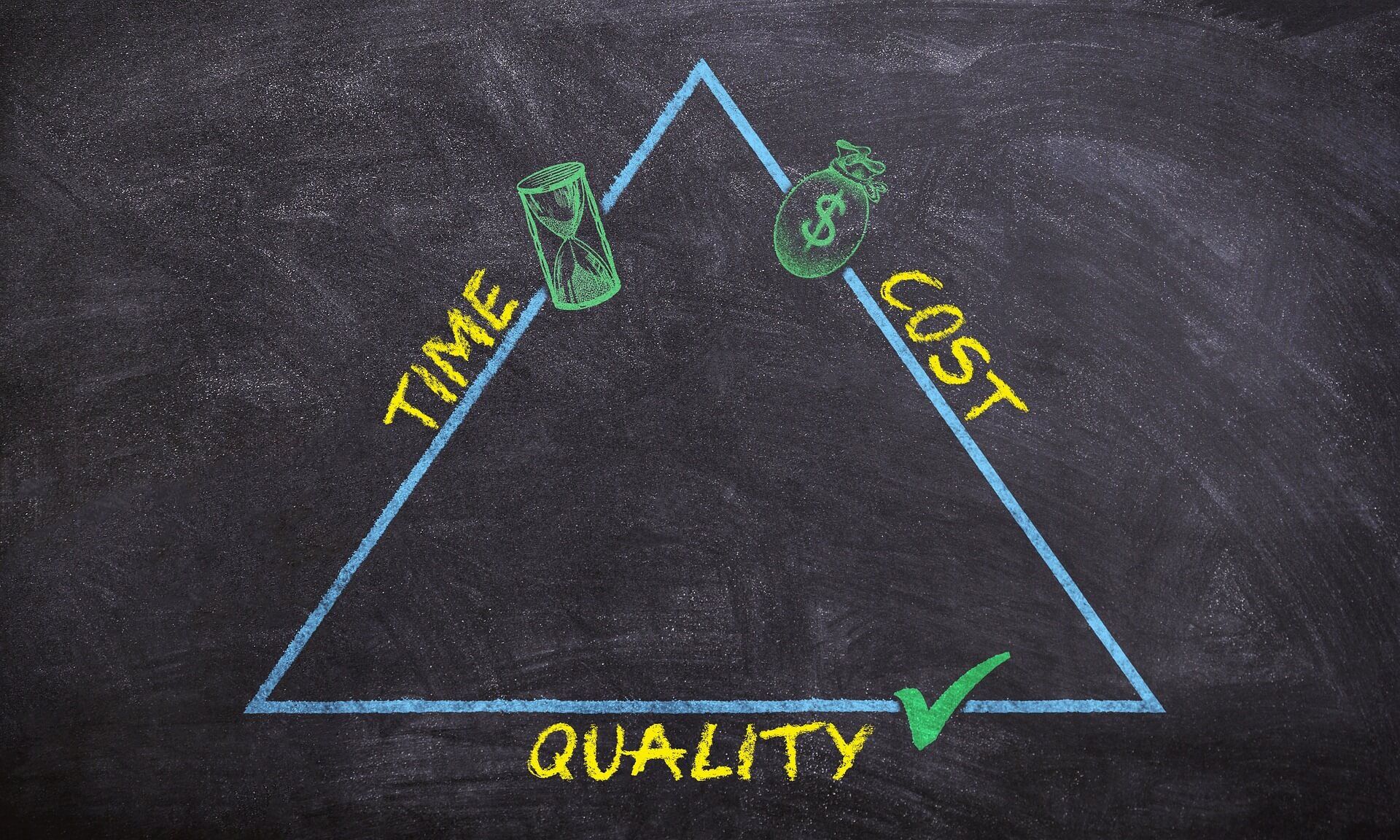Welcome to the complete guide to financial planning and analysis (FP&A), covering everything you need to know to become a pro at one of the most sought-after roles in finance.
FP&A is almost always the main driving force behind all major business decisions or, at least, it should be. It’s a critical part of any organization, helping leaders make informed choices about the future of the company.
With the right FP&A strategies in place, you can identify and manage risks, seize opportunities, and drive growth. And that's exactly what we'll cover in this comprehensive guide.
In this guide, we cover:
- What is financial planning and analysis (FP&A)?
- Why do businesses need FP&A?
- Benefits
- The difference between FP&A and accounting
- What do FP&A teams do?
- Responsibilities
- Job roles
- Important FP&A skills
- How to build an FP&A function
- Technology and automation
- What’s next for FP&A?
What is FP&A?
Picture this – you're the CEO of a business, and you need to make a decision that will impact your bottom line. But you can't just go with your gut, you need hard data to back up your choice. That's where FP&A comes in.
FP&A professionals dig into the numbers and use their expertise to paint a picture of a company's financial future. They use budgets, financial models, and data analysis to give decision-makers the information they need to make informed decisions.
In short, FP&A is a way for companies to stay ahead of the game financially. By using data and smart forecasting, businesses can plan for the future, remain financially healthy, and achieve their goals.
So, what is FP&A in finance?
Simply put, it's a critical tool for making smart financial decisions in today's fast-paced business world.
Why do businesses need FP&A?
An effective financial planning and analysis function is the cornerstone of any successful organization, providing a critical lens into the financial health of a company. It's not just about number crunching and spreadsheets, it's about helping organizations make informed decisions that drive growth, optimize resources, and mitigate risk.
Think of it like this – if you're driving cross-country, you don't just hit the gas and hope for the best. You map out your route, plan for pit stops, and factor in unexpected roadblocks. The same is true for a business – you need a plan to reach your destination, and that's where FP&A comes in.
By using data and smart forecasting, FP&A gives companies a clear view of their financial situation (past, present, and future).

Benefits of financial planning and analysis
FP&A is a critical tool for any business that wants to remain financially healthy and make data-driven decisions that impact the bottom line.
But what are the main benefits?
There are many, but some of the most important include:
- Data-driven decision making
- Financial foresight and heightened financial visibility
- Increased accountability and transparency
- Better resource allocation
- Improved risk management
- Better cash flow management
FP&A Vs accounting: What’s the difference?
You’d be surprised at just how many people confuse these two areas of finance. While both involve working with financial data, there are key differences between them.
First and foremost, let's start with accounting. Accounting is all about tracking and reporting a company's financial performance. Accountants use data to create financial statements, balance sheets, and income statements, which provide a snapshot of a company's financial situation at a specific point in time.
On the other hand, FP&A is all about using data and smart forecasting to make informed decisions for a company. Unlike accounting, which provides a static view of a company's financial situation, FP&A focuses on creating a guide for a company's future.
The main differences between FP&A and accounting are their focus and purpose. While accounting focuses on maintaining accurate records and compliance with financial regulations, FP&A leans on financial data to drive business strategy and decision-making.

What do FP&A teams do?
FP&A teams serve as financial problem-solvers, providing critical insights and recommendations to drive business success.
But what do FP&A teams do?
A lot of things, as it turns out. From data collection to creating detailed financial reports, budgeting, forecasting, scenario planning, and more, FP&A professionals have a lot on their plate, such as:
- Forecasting
- Financial modeling
- Strategic financial planning
- Budgeting
- Performance reporting
- Scenario planning
- Risk management and stress testing
- Ad hoc financial reporting

FP&A responsibilities
Let’s take a closer look at some of the most important FP&A roles and responsibilities:
Forecasting
Financial forecasting is a key responsibility of the FP&A team. The main goal of forecasting is to establish what the future holds concerning the financial performance of the company. With those valuable insights, management is in a much better place to make informed decisions so they can prepare for the future.
Unlike weather reporters, FP&A professionals don’t use a green screen to forecast a company’s finances. Instead, they rely on historical data and assumptions about future events and trends to make accurate projections. This helps companies plan for what’s to come, identify potential risks, and make informed decisions that impact the bottom line.
Forecasting is carried out by first collecting and analyzing data on the company’s historical financial performance, market trends, and economic conditions. All of this information is then used to create projections of the future financial performance of the company, often covering aspects such as revenue, expenses, and cash flow.

Financial modeling
Financial modeling is the process of creating an abstract representation of a company's financial situation and using that model to help understand how different scenarios might impact the bottom line.
FP&A uses a variety of software programs and tools to create financial models, including spreadsheets, databases, and specialized modeling software. Think of it like a crystal ball into the future, but instead of magic, it's all about data and trends.
The creation of a financial model starts by determining what the company’s key financial drivers are. Once you have those pinned down, it’s time to work on the model and make sure it reflects the relationships between these drivers and the organization's financial results.
You can then use the model to test multiple scenarios (via scenario planning, which we get into in more detail below), to establish the potential impact of different decisions on the organization.

Strategic financial planning
Financial planning helps align a company's financial goals with its overall strategic objectives. It also provides a clear blueprint for decision-making and helps ensure that the company's financial resources are aligned with its goals.
Keep in mind that strategic financial planning is not just about crunching numbers. It's about understanding the business, making informed decisions, and taking a proactive approach to achieving financial success. It's all about being in control of the organization's financial future and making sure that it has the resources it needs to achieve its goals and stay competitive.

Budgeting
Budgeting involves planning and managing the company's financial resources, tracking the performance of initiatives against pre-set targets, and making informed decisions to drive business success.
The budgeting process is a collaborative effort between FP&A, the finance team, and each department within the business. Each team provides input into the budget, including their plans for achieving their goals and the resources they’ll need to make it happen. FP&A then takes this information and uses it to create a comprehensive budget for the entire organization.
Once the budget is finalized, FP&A is responsible for monitoring the actual results against the budget and adjusting as needed.

Performance reporting
FP&A teams rely on performance reporting to track a company's financial performance and communicate it to stakeholders. It’s also used to track key metrics such as revenue, expenses, cash flow, etc.
The process starts with collecting and analyzing financial data, such as actual results, budgets, and forecasts. Armed with this information, they can then create reports that provide valuable insights like variances between actual results and budgets, trends, and areas for improvement.
These reports are usually shared with executives and senior management, the rest of the finance team, and other key stakeholders within the company. FP&A is also expected to present information in a clear, concise, and meaningful way, often using data visualization techniques to tell a compelling story that non-finance professionals can understand.
Scenario planning
Scenario planning is a key tool used by FP&A teams to help businesses prepare for and respond to potential future events. We live in an uncertain world after all, and organizations need to be ready for whatever comes their way.
The scenario planning process begins by identifying the key drivers of the organization's financial performance and the factors that could impact those drivers in the future. The team then uses this information to create multiple scenarios, each with different assumptions about how the key drivers will perform.
The reasoning behind scenario planning is to provide management with a range of possible outcomes so that they can make informed decisions about how to respond to different financial scenarios in real time should any of those events happen.
Scenarios are created using a combination of data analysis, expert judgment, and intuition. While the process of building multiple scenarios can be time-consuming, it’s important because it helps organizations anticipate change and prepare for the future.

Risk management and stress testing
Risk management and stress testing are key components of the FP&A process, used to help businesses identify and mitigate financial risks and ensure the company's financial stability.
Managing risk is all about identifying, assessing, and prioritizing financial risks to the company. Once you’re clear on that, it’s up to you to come up with the steps to help mitigate those risks. To do this, FP&A teams often develop contingency plans and will allocate resources to manage any risks that arise in an attempt to reduce their impact on the company.
Stress testing is a form of risk management that involves simulating potential adverse events to understand the potential impact on the company's financial performance.
Ad-hoc financial reporting
Sometimes, companies need FP&A to perform financial reporting out of the blue. This is referred to as ‘ad hoc financial reporting’ and means that financial reporting needs to be created on an as-needed basis.
Whilst it’s not everyone’s favorite approach to FP&A, ad-hoc financial reporting is extremely important because it provides the company with timely, relevant, and accurate financial data when they need it.

FP&A roles
There are a variety of different job titles within FP&A that focus on different aspects of financial planning and analysis.
Some job titles and roles may vary by company, but here are some of the most common roles in FP&A:
Chief Financial Officer (CFO)
As key executives within a company, CFOs often play a critical role in FP&A because it helps them make informed decisions about the organization's future financial performance. Not to mention, they also rely on insights from FP&A to help oversee financial operations and provide financial guidance to senior management.
Director of FP&A/Vice President of FP&A
Say hello to one of the most important players in the FP&A world! A Director of FP&A or VP of FP&A is a senior-level executive who leads the FP&A function within an organization. They’re responsible for ensuring that the company’s FP&A processes are efficient, effective, and aligned with overall goals and objectives. They work closely with different teams and the CFO to develop and execute financial strategies.
Without the Director of FP&A, an organization would struggle to make informed decisions about its finances, and it would be more difficult for senior management to understand the financial performance of the organization.

FP&A Manager
An FP&A Manager oversees the day-to-day operations of the FP&A function. They often work closely with other departments to help gather financial data, create financial models, and provide insights and recommendations to senior management.
Some of their daily tasks include evaluating and building budgets, creating financial models and forecasts, providing detailed analysis of the performance of different initiatives (such as a product), and communicating insights to executives.
Financial Analyst / FP&A Analyst
While you’ll often hear of different levels of seniority within the Financial Analyst role (such as Junior and Senior Analysts), many of the responsibilities remain similar regardless of seniority.
Someone in this role is usually responsible for analyzing financial data, creating forecasting models, tracking revenue and gross margin, analyzing trends and forecasts, preparing reports, and so on.

FP&A skills
What skills do you need in your arsenal to succeed in FP&A?
Here are just a few:
Attention to detail
Spotting trends and inconsistencies in complex reports isn’t easy. A skilled FP&A professional can look at the bigger picture and at the same time, zoom into the details to understand patterns and extract information from the data presented.
A curious mind
Having a curious mind and knowing the right questions to ask is so important for strategic planning and better decision-making. For example, a talented FP&A Manager isn’t afraid to ask executives what their biggest problem is and how they believe FP&A can help solve it.
Business acumen
You won’t get far in FP&A without understanding the business inside and out. This means taking the time to get familiar with the business model, goals, objectives, and strategy. The more you know about how the business works and what it wants, the better.
Analytical skills
Analyzing financial data and using the findings to make informed decisions is crucial for FP&A. This means you'll need analytical skills to be able to understand complex financial information, identify trends, and make recommendations based on that information.
Communication
FP&A teams aren’t siloed in the slightest. You’ll often be required to communicate complex financial information to a variety of stakeholders, including senior management, other departments, and external partners. Therefore, you must be an excellent communicator to articulate insights and recommendations to others.
Data storytelling
This one is connected to communication because it refers to the skill of communicating the meaning behind data using visuals such as graphs, tables, charts, and so on. Not only that but being able to build a story using that data to communicate business performance and drive decisions is extremely important.
Tech-savvy
You don’t need to be a pro at every new software and tool to hit the market. However, being a tech-savvy FP&A professional gives you a competitive edge because you’ll often have to learn new tools quickly and even teach others on the team how to use different technology.

How to build an FP&A Function
Building an FP&A function from scratch can seem like a daunting task, but it doesn't have to be. With the right approach, you can build a strong and effective FP&A function that’ll help your organization achieve its financial goals.
Here are some of the steps to help you get started:
Step 1: Define the goals and objectives of the FP&A function
What does the organization want to achieve through FP&A? What kind of insights does it want to gain? Having clear goals and objectives will help you focus your efforts and ensure that the FP&A function is aligned with the organization's broader goals.
Step 2: Assess the resources available
What kind of budget do you have? What kind of technology and tools are available? What kind of talent is already in the organization? With a clear understanding of the resources available, it’ll be much easier to make informed decisions about how to build your FP&A function.
Step 3: Develop a detailed plan
Next, it’s time to come up with a detailed plan and make sure to include specific steps for setting it up, such as hiring and training new staff, implementing technology and tools, and establishing processes and procedures.
Step 4: Build a strong team
You need to hire experienced and talented professionals who have the skills and expertise required for the roles you must fill. Make sure you have a mix of skills and experience on the team, including financial modeling, data analysis, and project management.
Step 5: Implement processes and procedures
This includes developing and implementing financial forecasting and reporting processes, as well as establishing clear lines of communication between the FP&A function and other departments within the organization.
Step 6: Continuously monitor and improve
Finally, you need to continuously monitor and improve the FP&A function. This means regularly reviewing its performance and making changes as needed to improve its effectiveness.
Just remember, building an FP&A function takes time, effort, and resources. So, be patient, stay focused, and don't be afraid to ask for help when you need it.

Technology and automation in FP&A
Technology has made a huge impact on the finance industry, especially within FP&A.
According to our State of Finance Transformation Report, 55.6% of respondents said that automation had the biggest positive impact on their FP&A processes above all else. Specifically helping to streamline processes, improve accuracy and speed, and provide a deeper level of insights that simply weren't as accessible as before.
AI is one of the biggest game-changers in FP&A right now. From predictive analytics to machine learning algorithms, AI is helping FP&A teams make better decisions, faster.
For example, AI can automatically identify patterns and trends in financial data that might take a person hours or even days to spot. This means FP&A teams can make data-driven decisions in real-time, without sacrificing accuracy.
But the benefits of technology in FP&A go beyond just speed and accuracy. For example, cloud-based software and tools have made it easier for finance teams to collaborate and share data with stakeholders across the organization. This has helped to improve communication, streamline workflows, and boost productivity.
So, what kind of software and tools are finance teams using to stay ahead of the curve? There are a ton of options out there, but some of the most popular include:
- Budgeting and forecasting software: This type of software helps FP&A teams create, monitor, and update budgets, as well as make more accurate forecasts.
- Financial reporting software: These tools help teams create and distribute reports more quickly and easily while maintaining accuracy.
- Dashboarding and data visualization tools: This type of technology helps teams turn raw financial data into easy-to-understand visualizations that make it easier to identify trends, spot opportunities, and make informed decisions.
Whether you're looking to streamline processes, improve accuracy, or just work more efficiently, there's no denying the power of technology in FP&A.

What’s next for FP&A?
The future of FP&A is all about two things: automation and data. As technology continues to evolve, finance teams will be able to automate more and more processes, freeing up time and resources to focus on higher-level tasks. This will lead to faster and more accurate decision-making, and help organizations stay ahead of the curve in an increasingly competitive business landscape.
Another big trend we're likely to see in the future is a greater focus on data. FP&A teams will have access to an ever-growing pool of data, which of course, they’ll have to turn into actionable insights.
To do so properly, FP&A will need to build its understanding of data science, machine learning, and other advanced technologies. So, it’ll be even more important to stay on top of these emerging FP&A trends.
One thing that won't change is the importance of the human touch. While automation and technology will play a big role in the future of FP&A, finance professionals will still be needed to interpret the data and make informed decisions. This means that the role of the FP&A professional is likely to evolve as well, becoming more focused on strategy and less on the nitty-gritty details of data analysis.
In conclusion, the future of FP&A is all about embracing technology and data, while maintaining a strong focus on human judgment and decision-making. As finance teams continue to automate processes, they'll be able to focus on the bigger picture and provide valuable insights to organizations across the board.
The future of FP&A is looking bright, and we can't wait to see where it goes from here!
Frequently asked questions (FAQs)
What does an FP&A role do?
An FP&A (Financial Planning & Analysis) role is responsible for financial planning, forecasting, and analysis to support the organization's overall strategic goals.
Is FP&A accounting or finance?
FP&A is a finance role. While accounting focuses on past financial transactions, FP&A focuses on forecasting and planning for future financial outcomes.
Is FP&A same as financial analyst?
Yes, FP&A is a type of financial analyst role. However, FP&A analysts typically have a broader range of responsibilities than other types of financial analysts.
What is the hierarchy of FP&A?
The hierarchy of FP&A typically includes roles such as Analyst, Senior Analyst, Manager, Senior Manager, Director, and Vice President.
What qualification is needed for FP&A?
Most FP&A roles require a bachelor's degree in finance, accounting, or a related field. Some employers may also require a master's degree or professional certification, such as the CFA (Chartered Financial Analyst) designation.
What skillset is required for FP&A?
Some of the key skills required for FP&A roles include financial analysis, budgeting, forecasting, data analysis, and communication skills. Strong Excel skills and knowledge of financial software such as ERP (Enterprise Resource Planning) systems are also often required.
Is FP&A a good career path?
Yes, FP&A can be a rewarding career path for those interested in finance and analysis. FP&A roles offer the opportunity to work closely with senior leadership and make strategic decisions that can have a significant impact on the organization's financial performance.
How to get into FP&A without experience?
While most FP&A roles require some previous experience, it is possible to get into the field without direct experience. One way to do this is to gain relevant skills and experience through internships or entry-level finance roles such as accounting or financial analysis.
Do you need CFA for FP&A?
No, a CFA (Chartered Financial Analyst) designation is not typically required for FP&A roles. However, some employers may prefer or require candidates with this certification, particularly for more senior or specialized roles.
Want to take your FP&A knowledge to the next level?
We host both in-person and virtual FP&A Summits for finance professionals looking to stay ahead of the curve and take their skills to the next level.
This is a rare opportunity to network with some of the best minds in the industry, learn from leading experts and thought leaders, and get hands-on experience with the latest tools and technologies.
Whether you're looking to improve your forecasting accuracy, streamline your workflows, or just stay up-to-date on the latest trends, an FP&A Summit is the place to be. So why wait? Sign up for the next virtual or in-person FP&A Summit today!



 Follow us on LinkedIn
Follow us on LinkedIn




